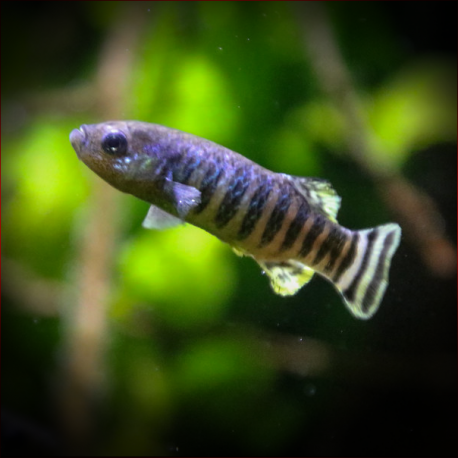More info
Datasheet
| Minimum Tank Size | 60 litres / 15.85 US gallons |
| Maximum Size | 5.0cm / 1.97inches |
| Temperature | 10°C / 50.00°F - 35°C / 95.00°F |
| Hardness | 10.03dgH / 179ppm - 25.04dgH / 447ppm |
| pH | 7.0-8.5 |
General Description
Aphanius sirhani, belonging to the Cyprinodontidae family, is a small species classified under Cyprinodontiformes. This toothcarp species, typically reaching a maximum size of 5.0cm, is known for its unique water requirements and vigorous spawning behavior, making it challenging for community aquarium setups.
Aquarium Setup
For maintaining Aphanius sirhani, a minimum tank size of 60 liters is recommended, with water conditions falling within a pH range of 7.0-8.5, a temperature range of 10-35°C, and a hardness level of 179-447ppm. The setup should include provisions for the fish to deposit eggs comfortably, such as acrylic wool mops, Java moss, or Ceratophyllum. The tank should offer numerous broken lines of sight to provide refuge for subdominant males and females from aggressive dominant males during the spawning season. Artificial heating is usually unnecessary except in very cold climates, and exposure to natural sunlight can enhance the fish's colors and overall condition.
Behaviour
Due to its specific water requirements and spawning behavior, Aphanius sirhani is best kept alone or in small groups with a recommended ratio of two to three females to each male. Captive reproduction is emphasized over collecting wild specimens due to the species' critical conservation status. Males establish temporary territories, display intense coloration when dominant, and defend against rivals while trying to entice females to spawn.
Feeding and Diet
Aphanius sirhani, like other Aphanius species, is primarily a micropredator, feeding on small aquatic crustaceans, worms, insect larvae, zooplankton, and occasionally algae and plant material. In aquariums, they can be fed dried foods along with live or frozen fare such as Artemia, Daphnia, or bloodworms, especially during spring and summer, which coincide with peak reproductive periods.
Reproduction & Dimorphism
Captive reproduction of Aphanius sirhani is relatively straightforward if the tank is properly arranged and maintained. Females deposit eggs continuously between May and November, with peak spawning times in May/June/July and October/November. Males and females exhibit sexual dimorphism, with males displaying dark vertical bars on their flanks and fins, while females are larger with dark spots on their bodies and hyaline finnage.
Habitat and Distribution
Endemic to the Azraq Oasis in the Wadi Sirhan valley of the Syrian Desert, Aphanius sirhani is Jordan's sole native vertebrate species and is critically endangered according to the IUCN. The species' habitat has undergone significant degradation due to human activities, leading to its precarious conservation status. Formerly home to diverse plant and animal life, the oasis has faced severe water depletion, resulting in the species' close brush with extinction.

